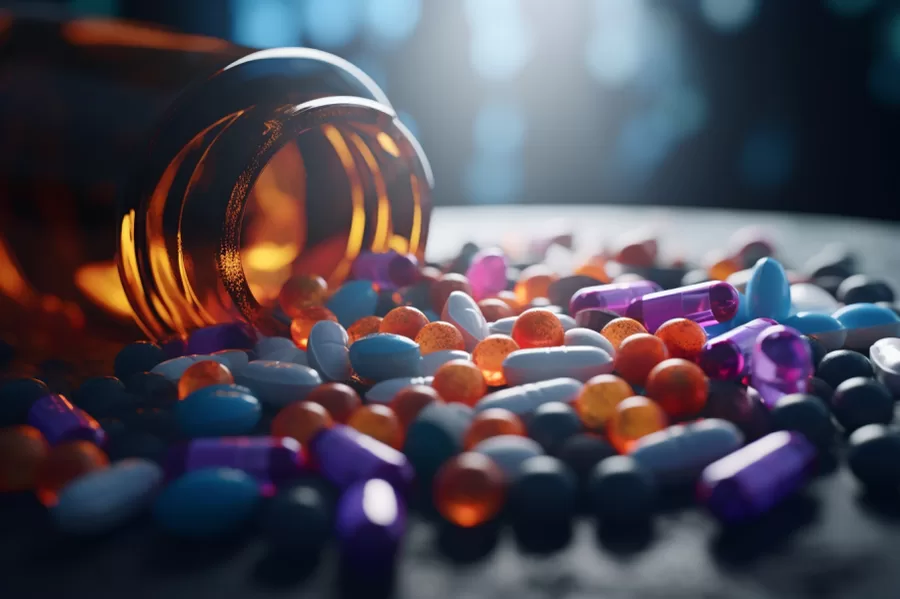Bacterial resistance to treatment is a severe threat to worldwide healthcare. In fact, its significance and scale forced the UN to create a separate organization (Interagency Coordination Group (IACG) on Antimicrobial Resistance) to address the issue and develop a global action plan to prevent a super bacteria apocalypse. Today, we are getting into details of how antibiotic-resistant infections occur and what to do with them.
What is Antibiotic Resistance
Antimicrobial resistance, or AR, is the term that describes bacteria’s ability to withstand treatment with antibiotics. Unless a working solution is found, the illness becomes persistent and leads to complications. This increases the load on the healthcare facility, demands an aggressive treatment plan, and takes a heavier toll both on the patient’s health and budget.
The CDC states that, in the USA, yearly over 2.8 million cases of infectious disease are caused by antibiotic-resistant bacteria.
Types of Antibiotic Resistance
There are two kinds of antibiotic immunity that a pathogen can possess: intrinsic and acquired.
Intrinsic Resistance
When the pathogen was never sensitive to a certain compound, it is called intrinsic AR. For example, clindamycin never had much efficacy against Enterococci, and Klebsiella pneumoniae has natural penicillin resistance.
Acquired Resistance
This second type is the reason why AR is such a problem: when bacteria lost sensitivity to once-effective medications, the condition cannot be approached with standard treatment protocols.
The pathogen can develop resilience to antimicrobial drugs by mutation (changing their DNA structure) or through a process known as “horizontal gene transfer”. It occurs when a microbe is close to an already mutated cell or its fragments and pulls part of its DNA merging it with its own genes.
Causes of Antibiotic Resistance
While bacteria can independently lose their sensitivity to antimicrobial medications, the most significant causes of antibiotic resistance are connected to how people use antibiotics.
Overuse
According to the CDC, almost a third of antimicrobial treatment courses prescribed by doctors are unnecessary. It equals about 47 million prescriptions yearly. Overuse of antibiotics promotes mutations in bacteria and increases the risk of misapplication.
Another example is Doxy-PEP (post-exposure-prophylaxis): when patients were taking a single dose of doxycycline to prevent STIs after having sexual contact without barrier protection. While the tactic has demonstrated some efficiency, doxycycline resistance has also increased.
Misuse
Sometimes, patients use prescribed antibiotics incorrectly:
- take medicine at the wrong time;
- skip doses;
- take medicine with incompatible drugs and other substances (e.g. alcohol);
- stop taking medicine before the full treatment course is finished.
As a result, the infection is not fully eradicated from the organism and the remaining pathogens develop antibiotic immunity. The illness comes back shortly, much harder to treat.
Lack of new antibiotics
Research and development aimed at the creation of new, more effective antibiotics is a long and costly process. It can take years of testing on animals and humans, getting approval, implementing it into a public healthcare system, etc. Moreover, doctors will likely be hesitant to use new drugs, anxious that infections will become immune to them as well.
Antibiotic Resistance Symptoms
The clinical picture of AR illness is not that different than that of an ordinary infection. However, there are developments that may be interpreted as symptoms of antibiotic resistance:
- there is no improvement after the start of antimicrobial treatment;
- despite treatment, complications develop;
- patient’s condition further deteriorates.
You can summarize it as the inefficiency of treatment which is the exact definition of AR.
Antibiotic Resistance Treatment
When the healthcare provider discovers that their patient does not respond well to antibacterial treatment, they will attempt to use another drug, perhaps, with another mechanism of action or broader spectrum. A combination of several different antibiotics may also be used if necessary.
What are Superbugs
Superbugs, or super bacteria, are extremely dangerous pathogens that developed resistance to multiple antibiotics and thus are very difficult to treat. A prime example of a superbug is methicillin-resistant S. aureus, or MRSA, which can infect the heart, lungs, and bloodstream, causing life-threatening diseases.
Super bacteria are dangerous because they spread easily around the globe due to globalization and have the potential to create a pandemic of untreatable infection.
Solutions to Combat Antibiotic Resistance
While antimicrobial resistance is natural and cannot be stopped completely, it can and should be adequately addressed. The global action plan described in the report by The United Nations Interagency Coordination Group (IACG) on Antimicrobial Resistance provides several suggestions.
Responsible use of antibiotics
To give pathogens less opportunity to adapt, antibiotics should be used thoughtfully both by doctors:
- take a culture test to evaluate antibiotic sensitivity before prescribing medicaments;
- avoid prescribing unnecessary antibiotics;
- save broad-spectrum drugs, such as meropenem, as the last-line treatment;
and by patients:
- follow doctor’s recommendations carefully;
- always finish treatment;
- do not give away antibiotics or use drugs prescribed for someone else;
Antibiotics are often used in agriculture as well, to prevent infections in plants and animals. This way of use should be controlled and limited because this is how antibiotics get into the human body and AR is promoted.
Development of new antibiotics
The introduction of new antibacterial medications will ensure that healthcare providers have the means to deal with antibiotic-resistant bacteria.
Vaccination and alternative treatments
Prevention of infection is the best way to guarantee that antibiotics will not be necessary, and vaccinations are a great way to protect people from various diseases. Spreading awareness of the importance of proper hygiene and social measures, providing access to healthy organic food and clean water, and education on the use of antibiotics are indirect methods to slow down AR.
When it comes to treatment, in some cases, antibacterial drugs can be avoided as unnecessary (e.g. in patients with cold); in other events, doctors can opt for alternatives, such as bacteriophages.
Summary
When a pathogen does not respond to therapy as intended, antibiotic resistance occurs. It necessitates a more intensive and prolonged course of therapy and raises the danger of the condition becoming incurable. AR reduces the effectiveness of treatment and increases the risk of new worldwide pandemics. Key elements in minimizing AR include proper antibiotic use and infection prevention strategies.
FAQ
What is the major cause of antibiotic resistance?
Misuse and abuse of antibacterial drugs is the main cause of AR.
Can you overcome antibiotic resistance?
AR infections are treated with alternative medications or several of them.
What is antibiotic resistance and how can it be prevented?
AR is an issue when antibacterial drugs are ineffective to treat the disease. Proper prophylaxis and responsible treatment are necessary to reduce AR and prevent its further development.
How do you know if you have antibiotic resistance?
AR is the easiest to detect when the bacteria culture gets tested for antibiotic sensitivity.



